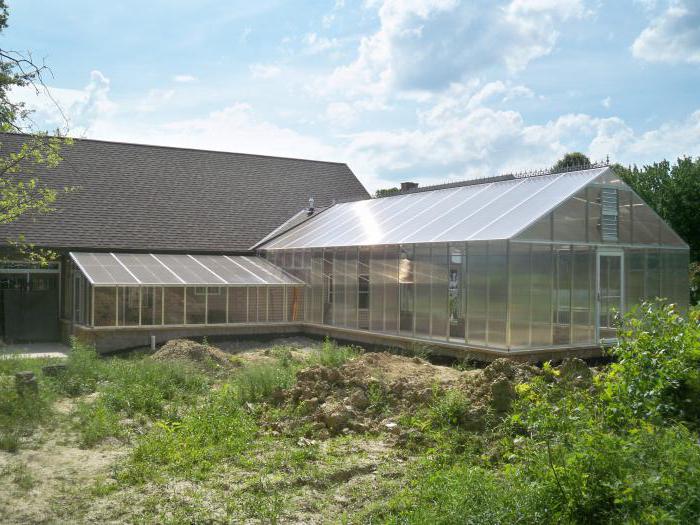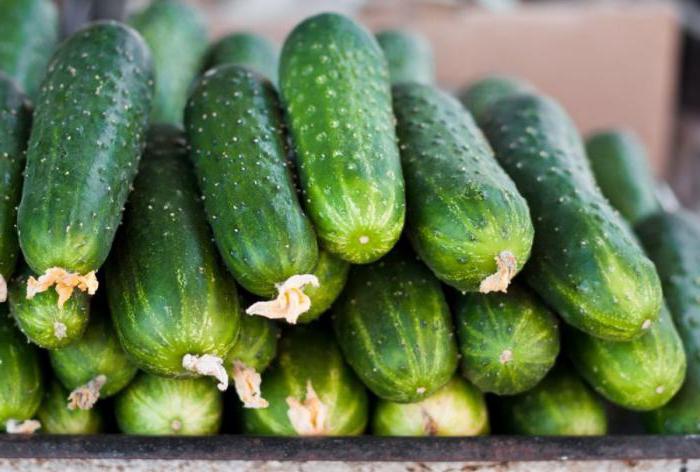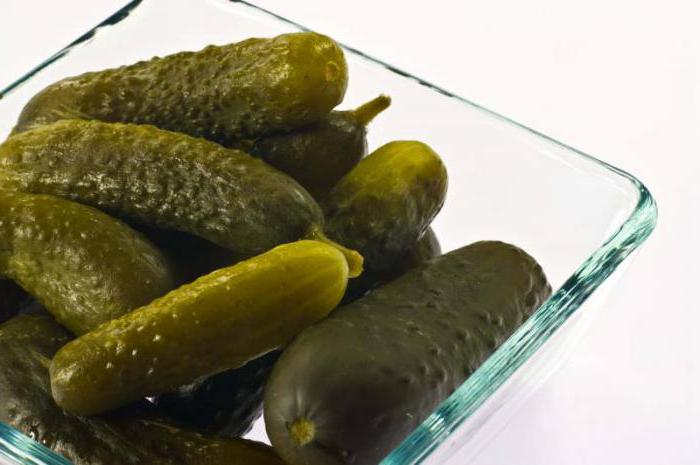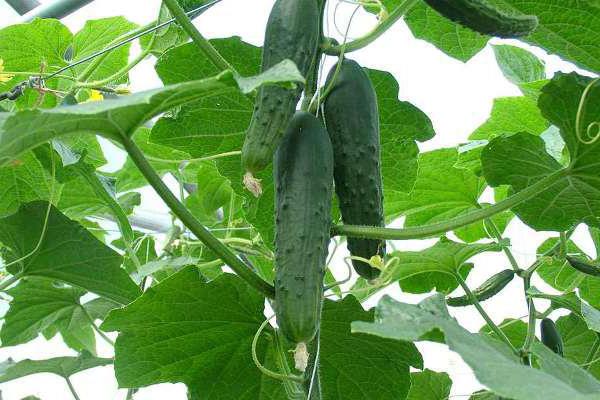The undeniable advantage of polycarbonate greenhouses compared to those that have a film coating makes them more popular among gardeners. They make it possible to grow vegetables for sale in comfortable conditions all year round and adjust the size of the structure depending on the amount of free space on the site. They can also be of the height and shape that the client wishes.
Summer residents seeking to increase yield and income should be aware that not all seeds can be used for planting in such structures. For example, there are special varieties of cucumbers for a polycarbonate greenhouse. They have different sets of properties than their "relatives", designed to grow under the film or in the open ground.
Advantages of Polycarbonate Constructions
The right choice of a greenhouse, which will serve and bring a stable income for many years, should begin by determining what it will be used for. For example, designs for growing seedlings are different from those where you can plant vegetables, both in size and shape.
Most gardeners prefer structures with straight walls and a gable roof to put racks or hang shelves in them. It is important when choosing such a greenhouse not to cheapen and not to buy instead of durable and reliable polycarbonate its cheap fake, which can bring a lot of trouble and extra costs to its owner.
An important role when buying a polycarbonate greenhouse is played by the material from which the structure is made. For example, if you grow cucumbers for sale, a galvanized steel frame will not work for a polycarbonate greenhouse for Siberia. It is able to bend, which in areas where a large amount of snow falls is unacceptable, although where there is high humidity or temperature changes, it will be useful.

A PVC frame is an excellent option, as it is durable, durable, not subject to environmental influences, but it must be carefully fixed. Light weight makes this design unstable in strong winds.
The most expensive, but also the most reliable is the frame made of high-strength aluminum, but no matter what the polycarbonate greenhouse the summer residents choose, they are all great for growing cucumbers, since it is easy to create any microclimate in them.
For those who prefer to entrust part of the work to automation, there are special devices that open and close windows, taking into account the temperature of the air outside.
Properties of greenhouse cucumbers
As practice shows, the presence of a greenhouse does not guarantee high yields. Before planning what to grow, you need to understand what qualities a product must have in order to give large fees. For example, in order to choose the right varieties of cucumber seeds for a polycarbonate greenhouse, you should know:
- How a vegetable reacts to light and heat. If you do not intend to install additional heating and lighting, then you need to choose varieties more frost-resistant and not demanding on the amount of daylight.
- What exactly will the crop go to. Some cucumbers are suitable for salads, but not suitable for canning, while others are universal.
- How exactly will pass and whether there will be pollination at all. There are varieties of cucumbers for the polycarbonate greenhouse, dispensing with it, as well as those that produce it themselves.
- What branching should the plant have in order to make it convenient to care for.
These and many other questions need to be considered in advance, after which you can begin to land.
Hybrid varieties
Sometimes people are afraid of the word “hybrid”, therefore, choosing varieties of cucumbers for a polycarbonate greenhouse, they prefer ordinary, but in vain. The “F1” mark on the seed bag means that this is the first generation of two different varieties selected for their outstanding qualities.
For example, when planting a hybrid variety, the seeds do not need to be hardened or decontaminated, since all this has already been done. In addition, they have a number of other advantages:
- their productivity is up to 40% higher than that of simple varietal cucumbers;
- they perfectly adapt to the environment and are less demanding in care;
- hybrid varieties of cucumbers for a polycarbonate greenhouse (reviews of gardeners confirm this) extremely rarely get sick or are “attacked” by pests;
- ripen much faster than ordinary cucumbers;
- have a more salable appearance, have excellent palatability and well tolerate transportation and storage;

It is characteristic that all these properties are manifested only in this generation, so it makes no sense to take seeds from hybrid vegetables for sowing. If a summer resident needs this type of cucumber for a polycarbonate greenhouse, reviews of experienced gardeners recommend paying attention to the varieties:
- Courage F1 is a self-pollinating, high-yielding species, with fruits weighing up to 140 g and up to 15 cm in length, very early, with proper care, gives up to 10 kg from the bush;
- Connie F1 - grow small neat greenery up to 10 cm in length and weighing up to 80 g with high taste and presentation.
There are a lot of hybrid varieties of cucumbers, so when choosing, you need to start from what this vegetable will be used for.
Varietal Cucumbers
If you choose non-hybrid cucumbers for a polycarbonate greenhouse, the best varieties are those that have such advantages as:
- low cost of seed;
- dominated by a single set of properties that is passed down from generation to generation;
- palatability and amount of vitamins is an order of magnitude higher than that of hybrid varieties;
When choosing the seeds of varietal cucumbers for the greenhouse, great attention should be paid to their resistance to diseases, since they develop more intensively in a warm and humid microclimate than in open ground.
Salad varieties
It is not without reason that cucumbers for a polycarbonate greenhouse are distributed according to their utility in the farm into salad, pickling and universal types. Their taste depends on this division. Salad varieties are more juicy, with a dense skin, while those that are suitable for preservation and salting have a thinner peel and elastic flesh. Summer residents should decide in advance which species to prefer, although universal varieties can simplify the choice.

To salad include:
- Orlik F1 - gives large fruits up to 16 cm in length with a weight of 120-150 g, resistant to powdery mildew, yield up to 8 kg per bush.
- Abbad F1 - well protected from most diseases, gives up to 12 kg / m2good taste.
- Graceful F1 - an early ripe variety with fast ripening medium-sized greenhouses with a weight of 100-120 g
- Makar F1 is a medium-sized plant that produces high quality and high yield fruits.
Choosing salad cucumbers for a polycarbonate greenhouse (the best varieties are those that are resistant to disease and with high yields), you can also build on their “pricklyness”. Many domestic consumers prefer Zelentsy with pimples, while Europeans prefer smooth skinned skin.
For salting
A thin peel is the main requirement that housewives should make when choosing cucumbers for pickling and preservation. Therefore, greenhouse owners need to be careful when choosing seeds for planting in a greenhouse.

Producers must indicate on the packaging the variety belonging to which the seeds belong:
- White Angel - one of the most famous pickling varieties, has a high yield and excellent taste;
- Voronezh - medium-late, giving a large crop and meeting all the requirements for good salting.
- The competitor is an early ripening variety with green stuff 100-130 g weight, resistant to diseases.
Such varieties are well grown for personal consumption, while for mass production it is better to choose cucumbers of a universal property.
Universal varieties
These types of cucumbers are most loved by summer residents, as they allow you to attract all customers in the market. They have a thin, but elastic skin and dense pulp.
- Marta F1 - a very tasty early ripening variety, giving Zelentsy up to 15 cm long, resistant to major diseases, by 1 m2 3 bushes can be planted;
- German F1 - a variety beloved by many gardeners for taste, neat fruits of 10-11 cm and yields of up to 9 kg from 1 m2;
- Masha F1 - suitable for those who want to earn the most money, since the variety is super early, with abundant fruiting and good germination of seeds.

The yield of many varieties of cucumbers depends on the quality of care. If it is ordinary, then you can collect from 7 to 10 kg from the bush, while with increased care, fruiting can reach 20 kg.
Varieties with numerous ovaries
Many summer residents prefer to plant varieties of beam cucumbers for a polycarbonate greenhouse to save space. This is due to the fact that they have a very high yield and with 1 m2 you can collect more than 500 fruits. Among the most popular and favorite varieties:
- Hybrid Anyuta F1 ripens early and gives up to 6 greens in one ovary. This is a pickling variety with neat cucumbers up to 10 cm in length.
- The hit of the season F1 is a very viable hybrid, suitable for growing in the most adverse conditions - with a small amount of light and heat. Gives up to 6 crispy fruits with juicy pulp, suitable for preservation and fresh consumption.
- Cheetah F1 has not only an unusual appearance, but also matures on 36-38 days after emergence. In nodes forms up to 4 cucumbers 13 cm long in a white longitudinal strip.
Such varieties are rightfully appreciated by those who save every meter in the greenhouse, but at the same time want to get the maximum yield.
Self-pollinating
An important role in the selection of cucumber seeds for a greenhouse is played by their self-pollination property or its absence at all. Since the bees will carry out all the necessary “work” when planting in open ground, they will not be able to do this in the greenhouse.

Parthenocarpic - the most optimal varieties for growing cucumbers indoors, since they have a stamen and a pistil in the same flower. Such species grow well in winter greenhouses. A distinctive feature of parthenocarpic varieties are green seeds without seeds.
The absence of problems with pollination greatly simplifies the care of them, leaving the gardener the usual actions - watering, loosening and top dressing.
The most productive varieties
Each summer resident is concerned with the question of how productive the variety of cucumbers chosen by him for planting can be. There are species that, with proper care, will yield up to 30 kg of fruit from 1 m2. These include:
- Tumi is a very hardy variety to adverse conditions, giving up to 12 kg of greens from the bush. Its fruits reach 10 cm in length and have a thin skin.
- Amur F1 is a very early maturing variety. Undemanding in care, but at the same time gives up to 30 kg from 1 m2. If you make an effort and give him more attention, he will “thank” the yield of 50 kg from 1 m2.

Given that breeders in many countries create new varieties of cucumbers for a polycarbonate greenhouse every year, gardeners can experiment and gain their own experience in growing this vegetable.
Growing time
So that the process of growth and fruiting lasts as long as possible, you can sow seeds of different ripening periods. They are divided into varieties of cucumbers for a polycarbonate greenhouse:
- Early - from seedlings to the first fruits only 35-45 days pass. These include species such as Masha F1 and Zozulya, which have not only a pleasant ripening period, but also a green length of up to 23 cm.
- The mid-early ripen in 45-50 days and include such varieties as Marinda F1, Rafael F1 and Solnechny.
- Later species are suitable for salting, and they give the crop after 56 days, for example, Athlete F1 and Hercules F1.
Growing cucumbers in a greenhouse is a profitable business and a pleasant hobby for those who prefer to put a polycarbonate greenhouse on their site.








